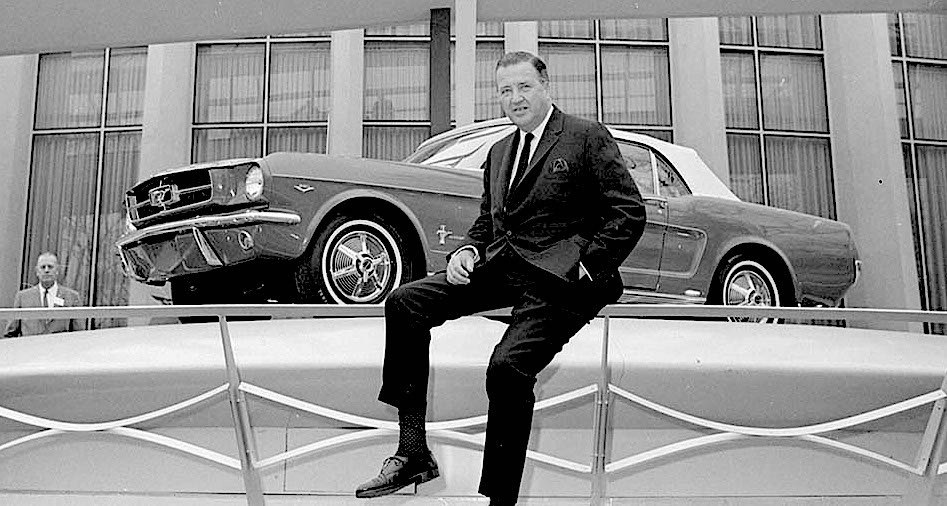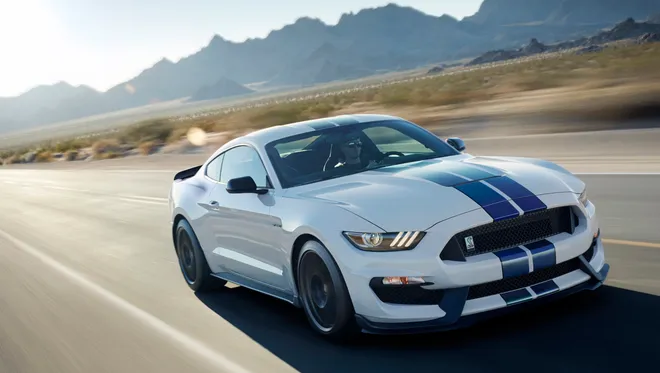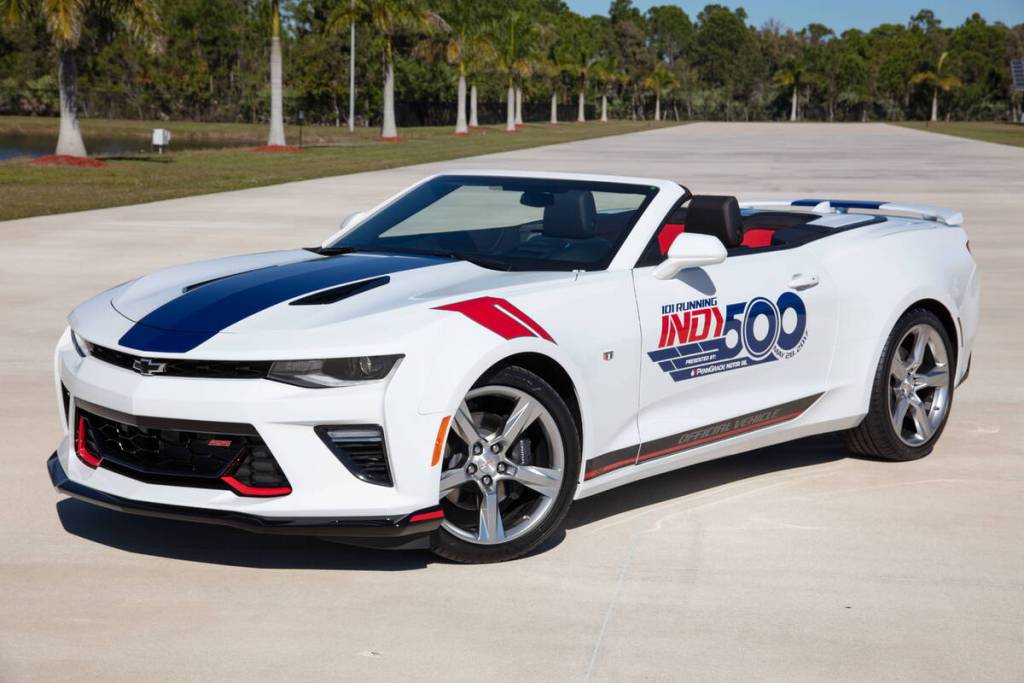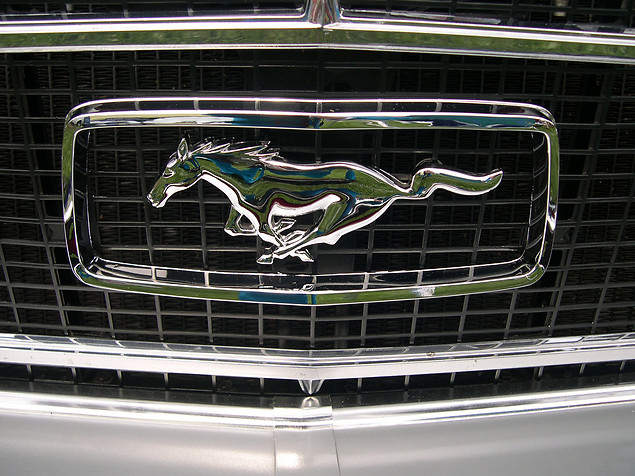My father (d. 2005) worked on the assembly line at the Ford plant on East Grand Avenue before moving up to an office job. He stayed with FoMoCo through retirement, which took place in Michigan a decade after the Dallas plant had closed. I was hyper-loyal to Ford, always insisting that its cars were the best and celebrating when guys like Glenn “Fireball” Roberts, Fred Lorenzen, Junior Johnson and Cale Yarborough won a stock car race in a Galaxie or Fairlane; when Jim Clark’s Lotus won the 1965 Indianapolis 500 with a double-overhead cam Ford engine in the rear (considered revolutionary back then), I was one happy boy.
I propose to do a little compare-and-contrast of two closely matched automobiles, one of which I favor—the Ford Mustang—and the other of which I grudgingly concede a degree of admiration for—the Chevrolet Camaro. Both have their adherents.
There are two stories about how the Mustang got its name. The more fanciful one goes like this: Lee Iacocca, one of Ford’s vice presidents (and later the number one guy) attended the Michigan–SMU football game in Ann Arbor on September 28, 1963. The visitors from Dallas, outweighed by 30 pounds per man, played a valiant game but lost, 27-16. Iacocca barged into the SMU locker room and addressed the dejected team. “Today,” he is alleged to have said, “after watching the SMU Mustangs play with such flair, we reached a decision. We will call our new car the Mustang. Because it will be light, like your team. It will be quick, like your team. And it will be sporty, like your team.” It’s true that the SMU logo closely resembles the galloping-horse emblem that would eventually adorn millions of the eponymous cars. Iacocca, a brilliant huckster, supposedly went so far as to sell SMU coach Hayden Fry the first Mustang to roll off the line—painted the school colors of red and blue—for $1.
More prosaic, and more likely, is that a Ford designer named John Najjar named the car for the P-51 Mustang, a World War II fighter plane. I will add that Ford had a prototype car designed and built in 1962, the name of which was Mustang 1. Perhaps the final decision on naming the car was not made until that football game at Michigan Stadium, which preceded by seven months the unveiling of the Mustang by Henry Ford II at the New York World’s Fair in mid-1964.
Ford officials were hoping to sell 100,000 Mustangs per year, but they were far too conservative. Some 559,000 were sold in 1965, 608,000 in 1966, and 472,000 in 1967, and sales figures did not dip below 100,000 until 2008, and then back up. This was the most successful vehicle launch since the Model A in 1927. What was its appeal? The 15-to-29 age group—baby boomers like me—would grow by 40% between 1960 and 1970, and those young drivers were enthralled by its sleek look, the bucket seats, the floor-mounted stick shifts and the high-performance engines.
I pause here to say that Dear Old Dad made use of his Ford employee discount to buy a gold Moo-Moo in 1966. It may have been a low-end version, a basic sedan (not that super-sexy 2+2 fastback) with a six-cylinder engine and three-speed automatic transmission, but we had a Mustang! We were convinced that it gave us a certain savoir faire, a certain je ne sais quoi that we had previously lacked.
In its 60-plus years, the Ford Mustang has gotten longer, lower, wider and more powerful. A current iteration of this iconic auto is the “Dark Horse” Mustang which comes with a high-revving 5.0-liter Coyote V-8 engine, which has as much as 500 horsepower. Equipped with a six-speed manual transmission or a 10-speed automatic, it can go from zero to sixty in 3.7 seconds and has a top speed of 166 miles per hour. The baseline price is $63,000.
On my mother’s side of the family were the Coxes, also of Dallas. For reasons that always puzzled me, they were 100 percent Chevrolet—Impalas, Malibus and so on. The Ford–Chevy gulf was wide between me and my cousin Allen. He was quite pleased when the Camaro was introduced in late 1966. General Motors executives had begun planning a rival as soon as the Mustang’s splashy debut forced their hand. Allen’s opinion notwithstanding, I felt nothing but disdain, scorn and derision for the Camaro. I saw it as no more than Chevy’s cheap copycat of the FoMoCo car. But as much as it pains me to admit this, I thought it was a very good looker. OK, there, I said it—I liked the Camaro, too. It caught its stride after a few years and really impressed me.
Sales never matched those of the Mustang; it peaked at 283,000 in 1979, but it certainly was popular. Other muscle cars (Plymouth Barracuda, Dodge Challenger, Oldsmobile 4-4-2, Pontiac Firebird) came and went, but these two endured. That is, until GM ceased making the Camaro between 2003 and 2009, citing declining sales, market trends and production costs. They started it back up again in 2010 only to send it to the automotive graveyard in 2024 when fewer than 6,000 were sold.
The Camaro, just like the Mustang, has been used numerous times as the pace car in the Indy 500, the Daytona 500 and other races. Both have done well in NASCAR, drag racing, Trans-Am racing and other competitive venues. Both have also made their mark in popular culture. To wit: a 1976 Camaro is driven by the robot character Bumblebee in the 2007 science fiction action film Transformers, and Wilson Pickett’s 1966 song “Mustang Sally” is about a man who buys a Mustang for his girlfriend, Sally, but she comes to prefer the car to him.






FoMoCo rules…


8 Comments
My husband’s dad also work for Ford east Dallas plant. An office job. He designed something for the assembly line that they still use today I’ve been told.
I had the Pontiac Firebird 1970 loved that car. Thanks for sharing.
I wonder if your father-in-law and my father knew each other!!
I had two buddies whose dads worked at the Ford plant in Dallas. I’m sure we had others at BA. One of my neighbors was in upper management at the plant and always had the new Fords several months before the public did. He parked them where we could see them. But no Mustangs.
Fast forward to 1974, the wife needed a car to take her from Dallas to Arlington as she was working on her masters. Found a gorgeous 65 Mustang in a bluish green color with white interior. It was as loaded as a Mustang could get in those days, except it had the inline 6. Great engine. Adequate performance. Handled well. Was trouble free. So I must give it to Mustang.
Now that Ford has figured it out they are putting some serious Mustangs on the street. I am a performance guy but would likely find the new Mustangs a little uncomfortable. I loved my 2010 Cadillac CTS V 4-door Sedan. 556 HP and 551 tq. Equipped with MagnaRide shocks that were adjustable from inside the car. If one wanted track time, it was equipped. Had that one up to 170 mph going across Lake Ray Hubbard before I ran out of room.
So in my old age only sophisticated HP. But Mustang wins the competition hands down. The only Camaro worth shooting was the 302 Boss.
Mustang was the Boss. Camaro was the 302 Z28. Circa 1969/1970. That was a race car on the street. It took Mustang decades to match that one.
Decades? I think not. The Shelby GT 350 was not exactly a pokey machine.
Another comment. The first few years the Mustang mechanicals were basically Ford Falcon parts. It was quick and easy to rebody and go. The Falcon was actually a well built car on its own. Just a tad ugly but sure could cook.
News to me. Thanks, Boyd.
I have had exactly 100 cars in my life. The first one I bought was a 1969 Mustang, which was originally a Hertz Rent A Car. My Dad’s friend bought it from Hertz and I bought it from him. That was July of 1977, and I paid $950. It had 48,000 miles on it. Only a 6 cylinder, but it had AC and a 3 on the floor. I drove it to Boston and back. I still have it, and will always keep it.
Add Comment